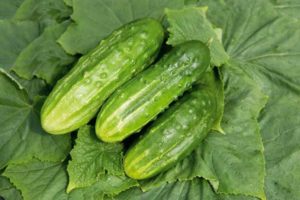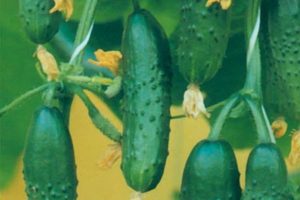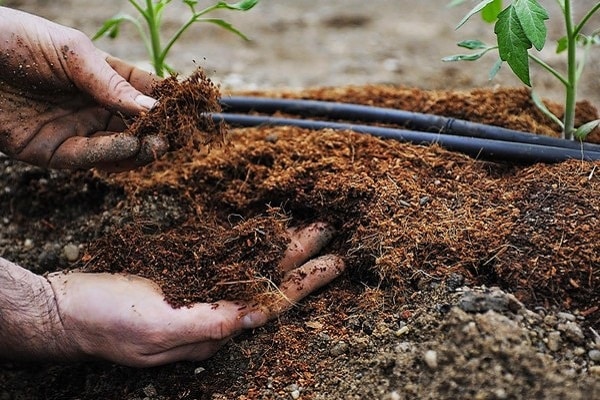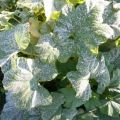Types of pests of cucumbers, control and treatment
Every vegetable grower who grows cucumbers wants to harvest the maximum amount of harvest. Quite often, pests of cucumbers in a greenhouse or in a vegetable garden interfere with this. Therefore, before growing, it is necessary to study in advance the pests of cucumbers in the greenhouse and their treatment.
Spider mite
This insect most often appears on seedlings that are grown in greenhouse conditions and hotbeds. However, sometimes, spider mites can be seen on cucumber bushes in the open field.
When this pest appears, a cobweb begins to appear on the surface of the leaves of the cucumbers. To make sure that the spider mites attacked the seedlings, it is recommended to carefully examine the lower part of the leaves, since insects often hide there.
Such ticks multiply very quickly, since their female can lay about two hundred eggs in one season. Literally a few weeks after the appearance, the pests of cucumber seedlings suck all the juice from the leaves, which leads to the slow death of the cucumbers.
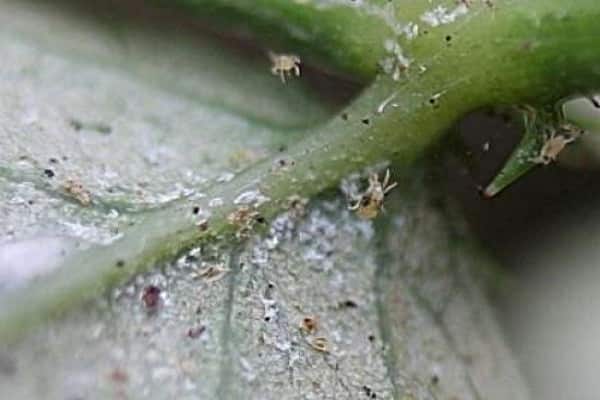
How to protect cucumbers from spider mites
It is necessary to fight pests immediately after their appearance in order to save the seedlings from death. Greenhouse plants protect against this insect by two main methods:
- Regular watering. The mite does not like highly moist soil and therefore does not reproduce in high humidity conditions.
- Planting plants. It is recommended to plant carrots, parsley or dill near the cucumbers. They attract ladybirds, which feed on spider mites.

Ticks are not covered with a protective cover and therefore it is recommended to treat cucumber seedlings with special caustic compounds that will cleanse cucumber seedlings from them. It is recommended to create processing means from components that are harmless to people. You can spray seedlings with the following solutions:
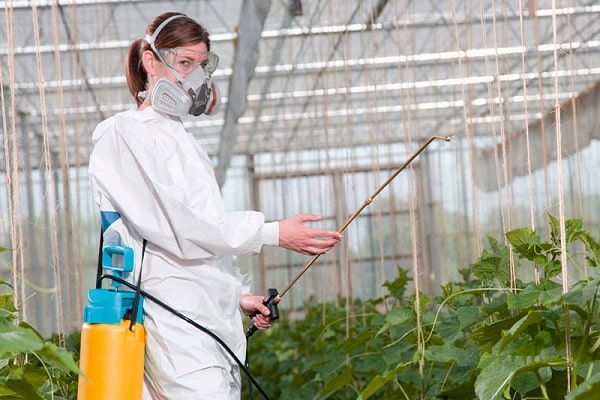
- A liquid made from soap and ground pepper. To prepare the drug, the same amount of soap and ground pepper is added to 10 liters of water. Then 40 grams of ash and chopped onions are added to the mixture. Before watering the plants, strain the resulting liquid through cheesecloth.
- Capsicum remedy. In 5-7 liters of water, add 80 grams of ground hot pepper. The mixture should be infused for at least a day, after which it will need to be watered with cucumber bushes twice a week.

Some gardeners do not use folk remedies and use chemicals instead. It is recommended to use such funds only in the first 2-3 weeks after planting in the soil, before the start of fruit formation.
Snails and slugs
Slugs and snails are quite common in the gardens of summer residents. During the day, they may not be noticed on cucumbers, since these pests prefer to crawl out at night or in cloudy weather. If a slug or snail appears on a plant, then it eats cucumber leaves and even their fruits. At first they start with the lower leaves, but eventually move on to the rest. If you do not protect the seedlings from slugs and snails in time, they will completely destroy the cucumber bushes.

How to protect cucumbers from snail slugs
Some vegetable growers do not know what to do to get rid of such pests. There are several fairly effective ways to protect seedlings in a greenhouse and outdoors:
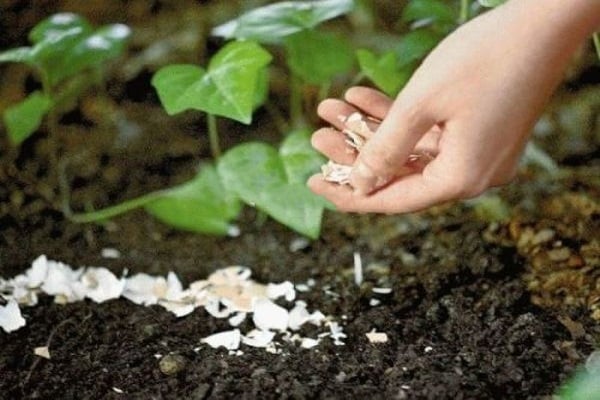
- Copper tapes. To prevent the snails from eating the leaves of the cucumber seedlings, it is necessary to spread copper ribbons near the plants. During contact with such material, mollusks receive a small electrical charge, from which they can die.
- Chemicals Thunderstorm or Meta. If the use of copper tapes did not help, then you will have to spray the cucumbers with special chemicals. Pest control of cucumbers must be done very carefully. It is not recommended to use very concentrated mixtures and therefore, before use, chemicals must be diluted with water. Manufacturers claim that the use of these drugs is absolutely harmless for people.

Thrips
Quite often, the leaves on cucumbers are eaten by tobacco thrips. These white insects begin to multiply in the soil and eventually move to cucumber seedlings. Cucumbers with thrips on leaves will not be able to live long. This pest gnaws the leaves and feeds on the juice of cucumbers, which over time leads to serious deformations of fruits and stems. Also, during cultivation, large light spots may appear on the leaves.

How to deal with thrips
Thrips are very resistant insects and therefore the fight against them can take a long time. Cucumber pest control technology can be carried out using the following means:

- Duct tape. You can protect cucumbers from pests in the greenhouse with duct tape. Adults often fly and therefore there is a chance that they will fall into such a trap.
- Watering. Regular watering works well against thrips. Such pests of cucumber seedlings do not like high humidity and therefore it is recommended to periodically water the plant leaves with a hose.
- Fitoverm. When the above methods of struggle do not help, the cucumber bushes are treated with Fitoverm. It is necessary to use this tool only in the evening at temperatures above 20 degrees.
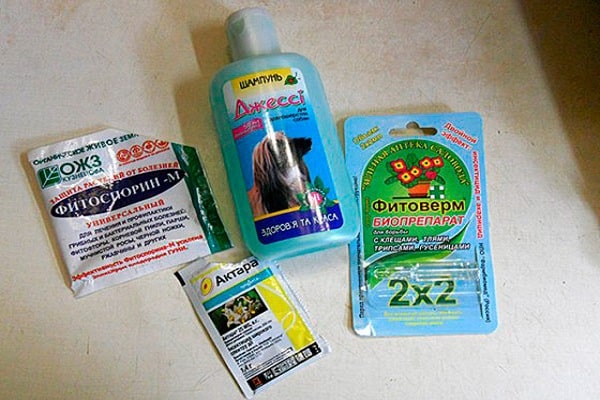
Worms
Another common problem when growing cucumbers is worms. They affect the performance of the root system, as they can begin to gnaw the root of the cucumber. If you do not get rid of the worms on the roots in time, the plant will die.
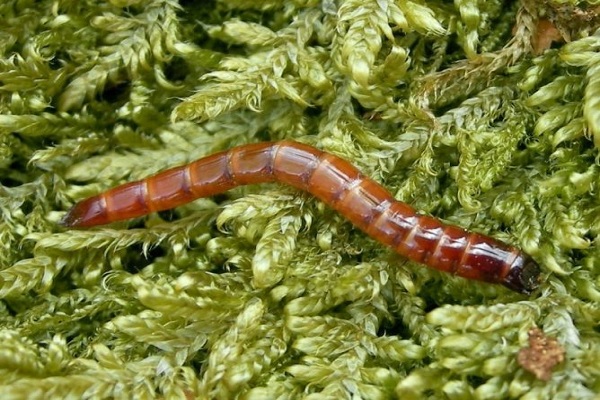
How to protect cucumbers from worms
To protect the roots from worms, several of the most effective means are used to combat them:

- Baosia seeds butration. With flour made from the seeds of this Malay plant, you can quickly get rid of pests in the soil. These seeds contain a substance called maurin. When feeding, it is it that affects the worms after entering their body. Feeding the plants with flour, no more than 200 grams of flour should be consumed per square meter of land.
- Copper sulfate. To protect the cucumbers from worms, spray the area with copper sulfate. It is not recommended to use it dry, so it should be mixed with water.
- Derris.A very effective product often used for pest control. Before using it, a working solution must be prepared. To do this, 20 grams of the product is mixed with 5 liters of water and infused for about 40 minutes. It is necessary to treat the area with Derris twice a month.
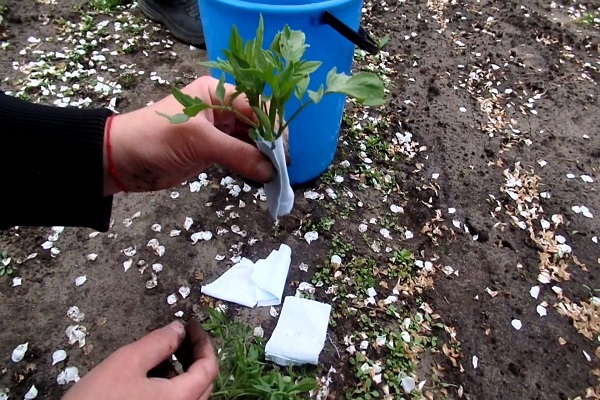
Whitefly
Many gardeners complain that grown cucumbers are suffering from whitefly. This small insect is very similar to butterflies. Caterpillars of whiteflies and adults are rather small - 2-3 mm in length, and therefore it is rather difficult to notice them on cucumber bushes.
Whiteflies spend most of their lives eating leaves that begin to dry out over time.
The main sign of the presence of pests on the seedlings is a weak bloom located on the lower half of the leaves. In the affected areas of the leaves, a fungus begins to develop, due to which the seedlings can become infected with one or another disease. After a few days, signs appear from above. A huge number of small holes appear on the upper leaf plate.
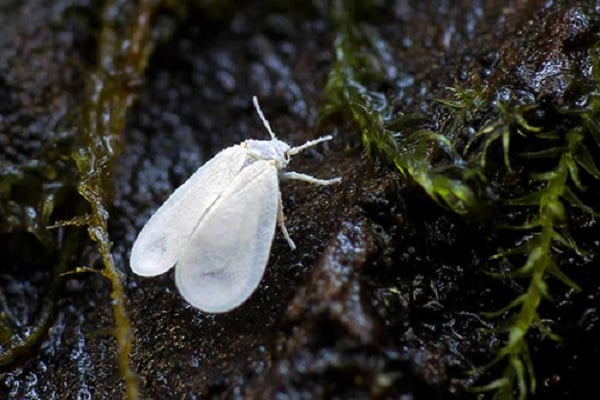
The insect is often found in greenhouses, as it reproduces only in warm conditions with high humidity. In the open field, whitefly is also found, but much less often.
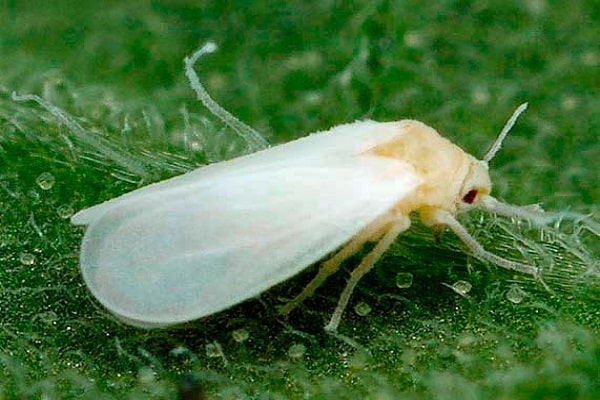
How to process cucumbers to remove whitefly
It is very difficult to save cucumber bushes from this insect. If she attacked only a few bushes, then it is easier to simply get rid of the infected plants so that the insect does not have time to spread to neighboring seedlings. However, this option is not suitable for larger distribution. In this case, you can use:
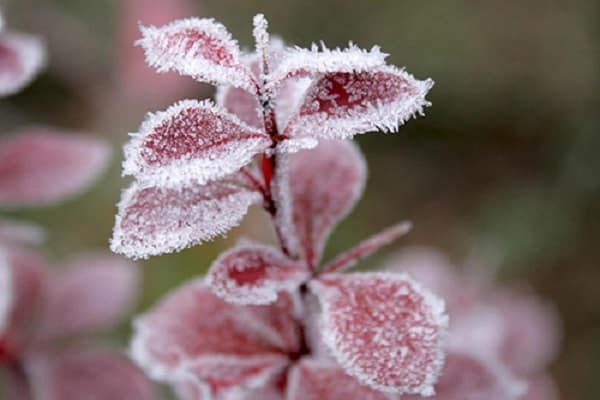
- Sticky tapes. Fly tapes are great for this. They are hung throughout the greenhouse over each row of cucumbers.
- Planting plants. For example, some gardeners plant bover mushrooms near cucumbers to protect them from whitefly.
- By spraying. You can regularly spray the cucumber bushes with a hose. In this case, the pressure should be powerful enough to wash all insects from the leaves.
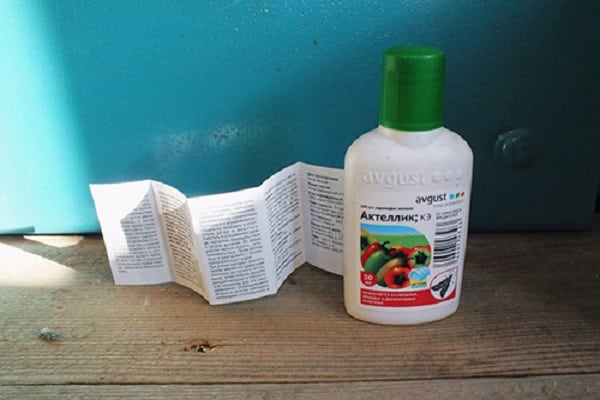
Gall nematode
Gall nematode is the most dangerous pest that can be encountered while growing cucumbers. Many are interested in what damage this pest causes to the plant. Nematoda quickly takes root in root system of cucumbers and violates its integrity. Also, the absorption capacity of the roots may deteriorate 2-3 times. Over time, the cucumber bushes stop growing and gradually die.
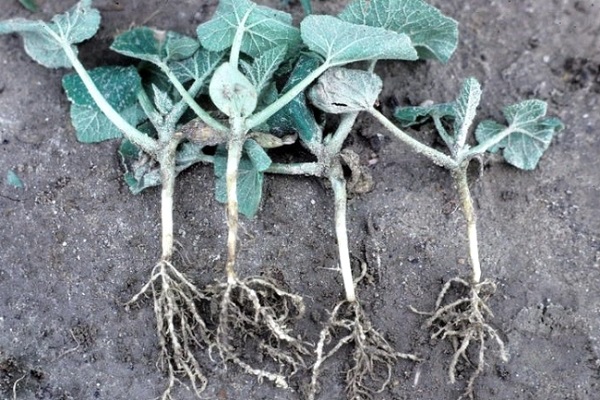
Pest control methods
Many experts advise, when a nematode appears, to immediately get rid of infected cucumbers, until the pest begins to spread to other crops in the area. However, not everyone wants to lose the harvest of cucumbers and therefore are trying to cure the bushes. In this case, we fight the nematode using the following methods:
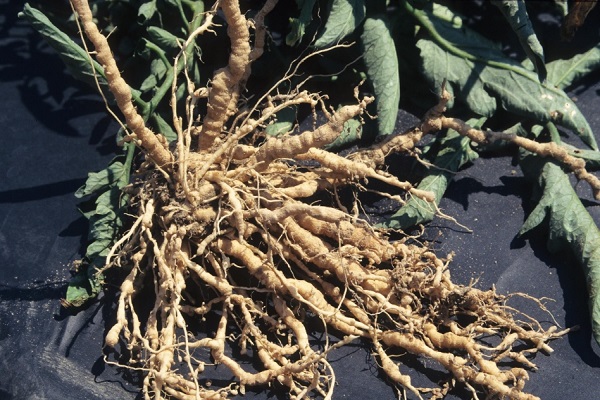
- Heat treatment. Thermally treated bushes can be saved from nematodes. It is recommended to carry out this procedure during transplanting seedlings or when cucumber bushes are at rest. To do this, the roots of the seedlings must be soaked in warm water for 20-40 minutes. After the procedure, the cucumbers must be immediately placed in a container with cold water so that it cools quickly.
- Chemicals. Chemicals are used if heat treatment has failed to cure the seedlings. Many do not know which chemicals are best for treatment. For this, it is better to use Aktofit or Fitoverm, produced in powder form. During use, these products are scattered on the ground and mixed with the soil. Some people dilute them with water and spray the resulting liquid on the plant. Chemicals must be used very carefully in greenhouses. After applying them, it is recommended to ventilate the room for several hours.
Conclusion
Almost everyone who grows them is faced with pests of cucumbers. To get rid of them, you need to understand who is eating the plant and how to save cucumber bushes from pests.
